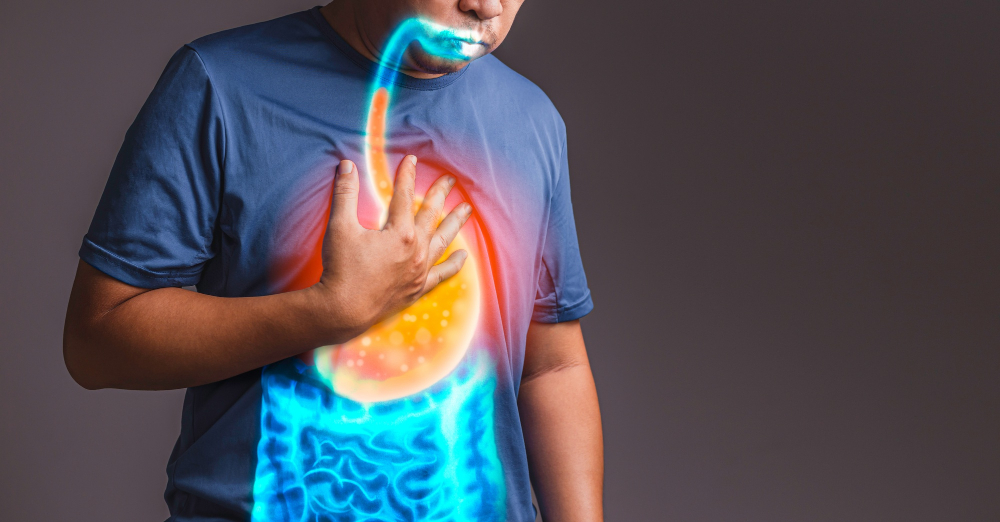General Information About Esophageal Cancer
Esophageal cancer is a disease in which malignant (cancer) cells form in the tissues of the esophagus.
The esophagus is the hollow, muscular tube that moves food and liquid from the throat to the stomach. The wall of the esophagus is made up of several layers of tissue, including mucous membrane (inner lining), muscle, and connective tissue. Esophageal cancer starts in the inner lining of the esophagus and spreads outward through the other layers as it grows.
The two most common types of esophageal cancer are named for the type of cells that become malignant (cancerous):
- Squamous cell carcinoma: Cancer that forms in the thin, flat cells lining the inside of the esophagus. This cancer is most often found in the upper and middle part of the esophagus but can occur anywhere along the esophagus. This is also called epidermoid carcinoma.
- Adenocarcinoma: Cancer that begins in glandular cells. Glandular cells in the lining of the esophagus produce and release fluids such as mucus. Adenocarcinoma usually starts in the lower part of the esophagus, near the stomach.
Esophageal cancer is found more often in men.
Men are about three times more likely than women to develop esophageal cancer. The chance of developing esophageal cancer increases with age. Squamous cell carcinoma of the esophagus is more common in blacks than in whites.
Esophageal Cancer Prevention
Avoiding risk factors and increasing protective factors may help prevent cancer.
Avoiding cancer risk factors may help prevent certain cancers. Risk factors include smoking, being overweight, and not getting enough exercise. Increasing protective factors such as quitting smoking and exercising may also help prevent some cancers. Talk to your doctor or other health care professional about how you might lower your risk of cancer.
The risk factors and protective factors for squamous cell carcinoma of the esophagus and adenocarcinoma of the esophagus are not the same.
The following risk factors increase the risk of squamous cell carcinoma of the esophagus:
1. Smoking and alcohol use
Studies have shown that the risk of squamous cell carcinoma of the esophagus is increased in people who smoke or drink a lot.
The following protective factors may decrease the risk of squamous cell carcinoma of the esophagus:
1. Avoiding tobacco and alcohol use
Studies have shown that the risk of squamous cell carcinoma of the esophagus is lower in people who do not use tobacco and alcohol.
2. Chemoprevention with nonsteroidal anti-inflammatory drugs
Chemoprevention is the use of drugs, vitamins, or other agents to try to reduce the risk of cancer. Nonsteroidal anti-inflammatory drugs (NSAIDs) include aspirin and other drugs that reduce swelling and pain.
Some studies have shown that the use of NSAIDs may lower the risk of squamous cell carcinoma of the esophagus. However, the use of NSAIDs increases the risk of heart attack, heart failure, stroke, bleeding in the stomach and intestines, and kidney damage.
The following risk factors increase the risk of adenocarcinoma of the esophagus:
1. Gastric reflux
Adenocarcinoma of the esophagus is strongly linked to gastroesophageal reflux disease (GERD), especially when the GERD lasts a long time and severe symptoms occur daily. GERD is a condition in which the contents of the stomach, including stomach acid, flow up into the lower part of the esophagus. This irritates the inside of the esophagus, and over time, may affect the cells lining the lower part of the esophagus. This condition is called Barrett esophagus. Over time, the affected cells are replaced with abnormal cells, which may later become adenocarcinoma of the esophagus. Obesity in combination with GERD may further increase the risk of adenocarcinoma of the esophagus.
The use of medicines that relax the lower sphincter muscle of the esophagus may increase the likelihood of developing GERD. When the lower sphincter muscle is relaxed, stomach acid may flow up into the lower part of the esophagus.
It is not known if surgery or other medical treatment to stop gastric reflux lowers the risk of adenocarcinoma of the esophagus. Clinical trials are being done to see if surgery or medical treatments can prevent Barrett esophagus.
The following protective factors may decrease the risk of adenocarcinoma of the esophagus:
1. Chemoprevention with nonsteroidal anti-inflammatory drugs
Chemoprevention is the use of drugs, vitamins, or other agents to try to reduce the risk of cancer. Nonsteroidal anti-inflammatory drugs (NSAIDs) include aspirin and other drugs that reduce swelling and pain.
Some studies have shown that the use of NSAIDs may lower the risk of adenocarcinoma of the esophagus. However, the use of NSAIDs increases the risk of heart attack, heart failure, stroke, bleeding in the stomach and intestines, and kidney damage.
2. Radiofrequency ablation of the esophagus
Patients with Barrett esophagus who have abnormal cells in the lower esophagus may be treated with radiofrequency ablation. This procedure uses radio waves to heat and destroy abnormal cells, which may become cancer. Risks of using radiofrequency ablation include narrowing of the esophagus and bleeding in the esophagus, stomach, or intestines.
One study of patients who have Barrett esophagus and abnormal cells in the esophagus compared patients who received radiofrequency ablation with patients who did not. Patients who received radiofrequency ablation were less likely to be diagnosed with esophageal cancer. More study is needed in order to know whether radiofrequency ablation decreases the risk of adenocarcinoma of the esophagus in patients with these conditions.
Post time: Sep-04-2023


